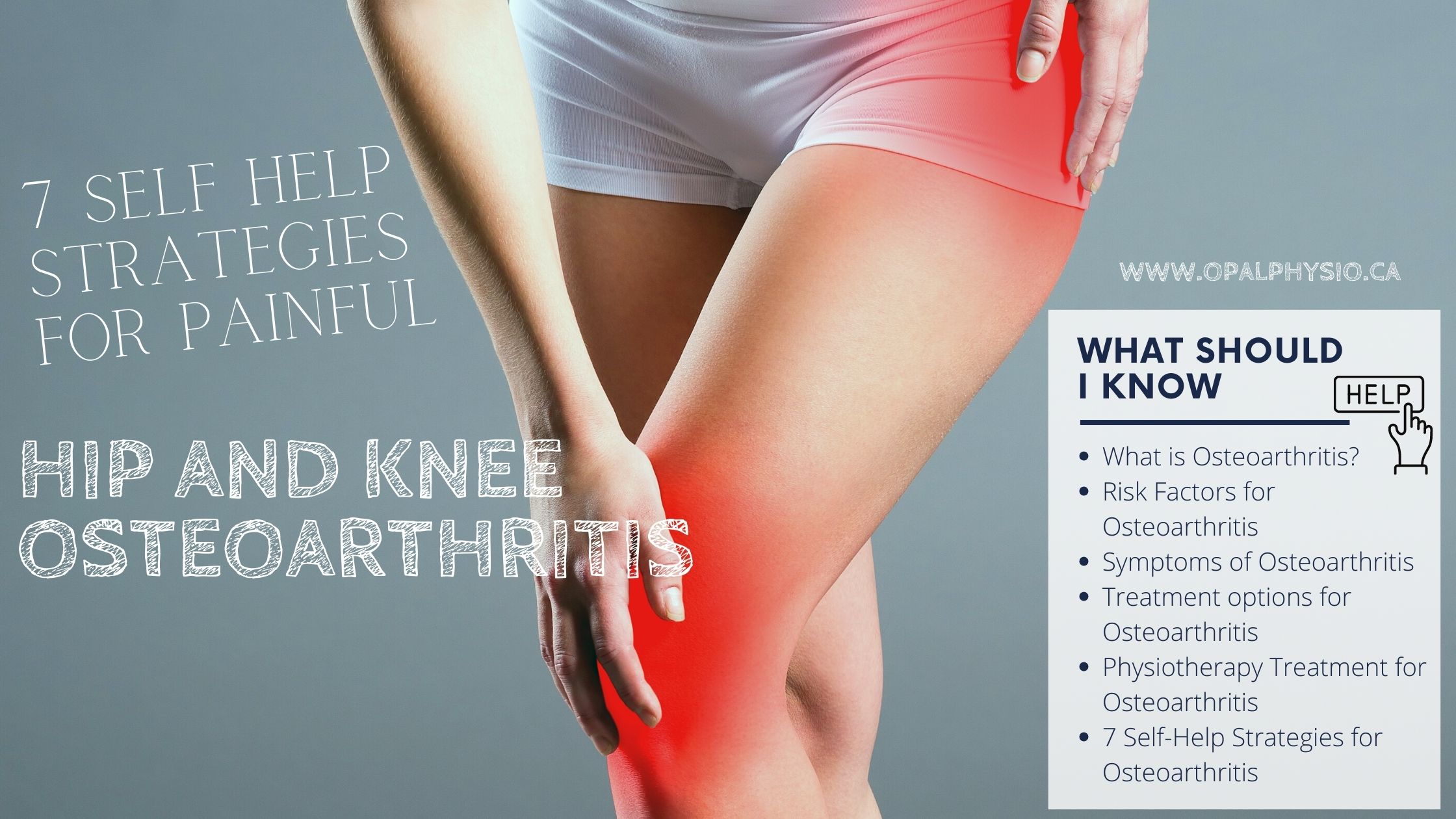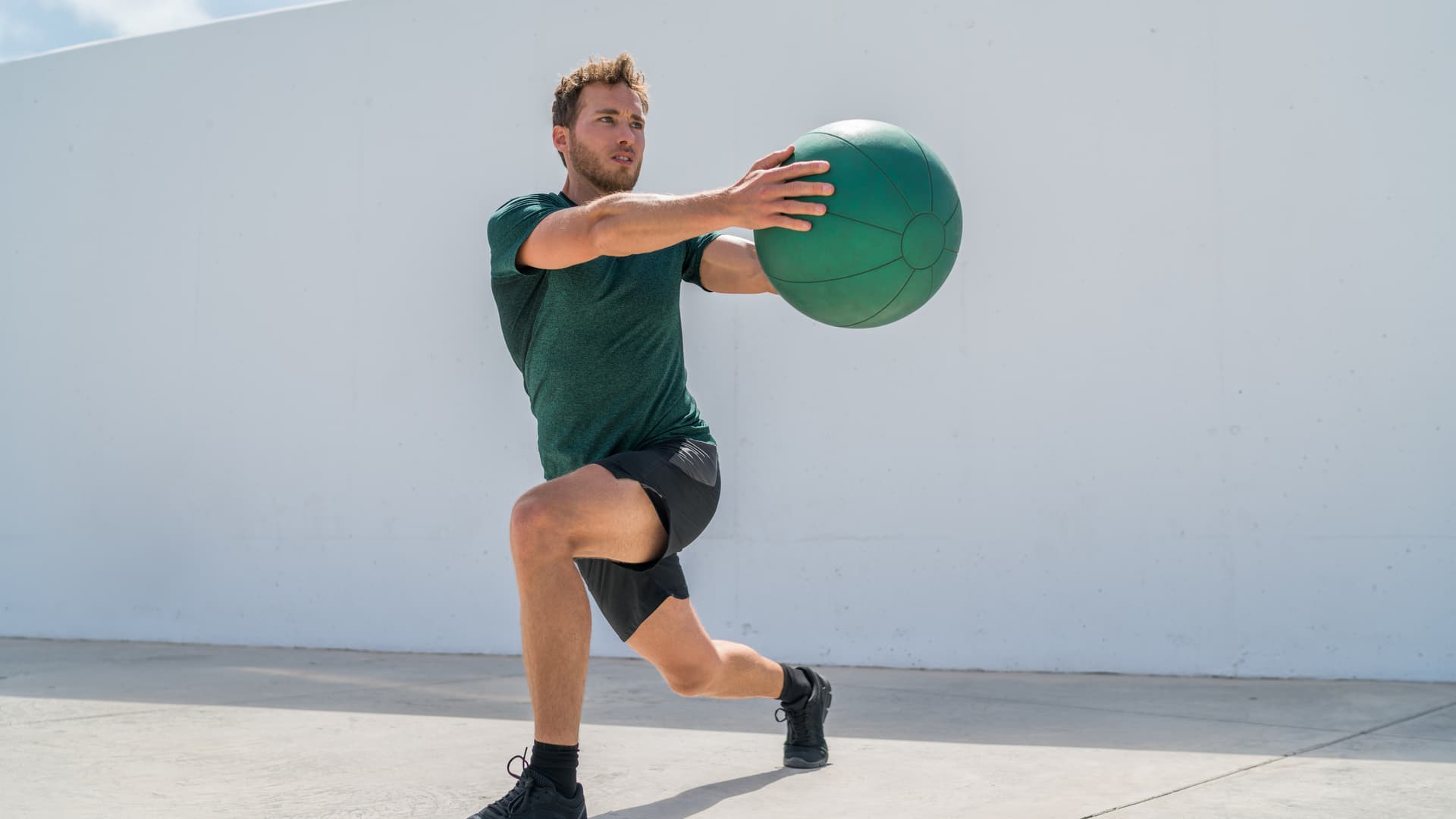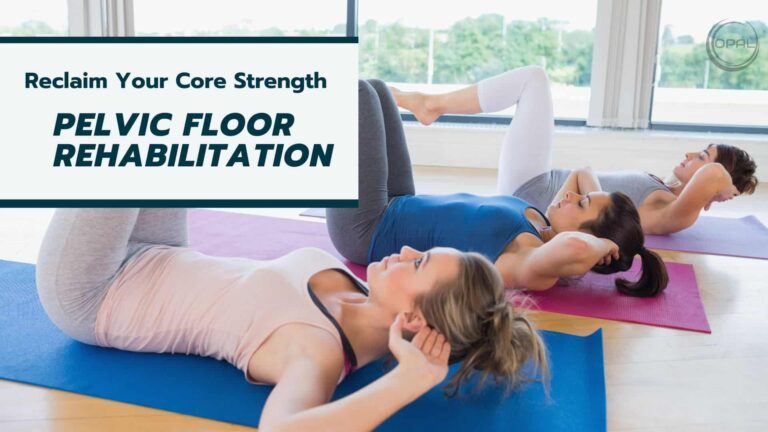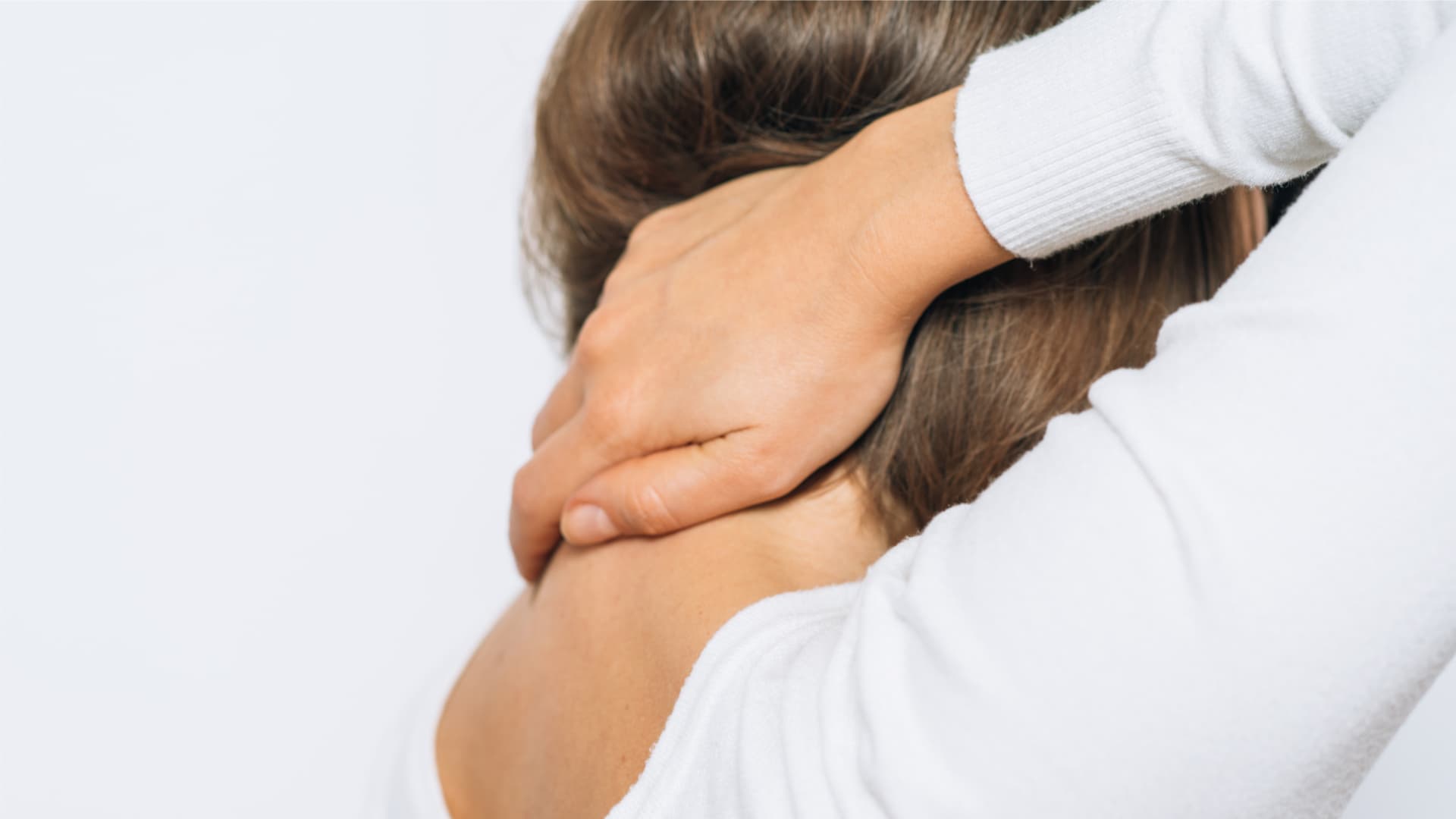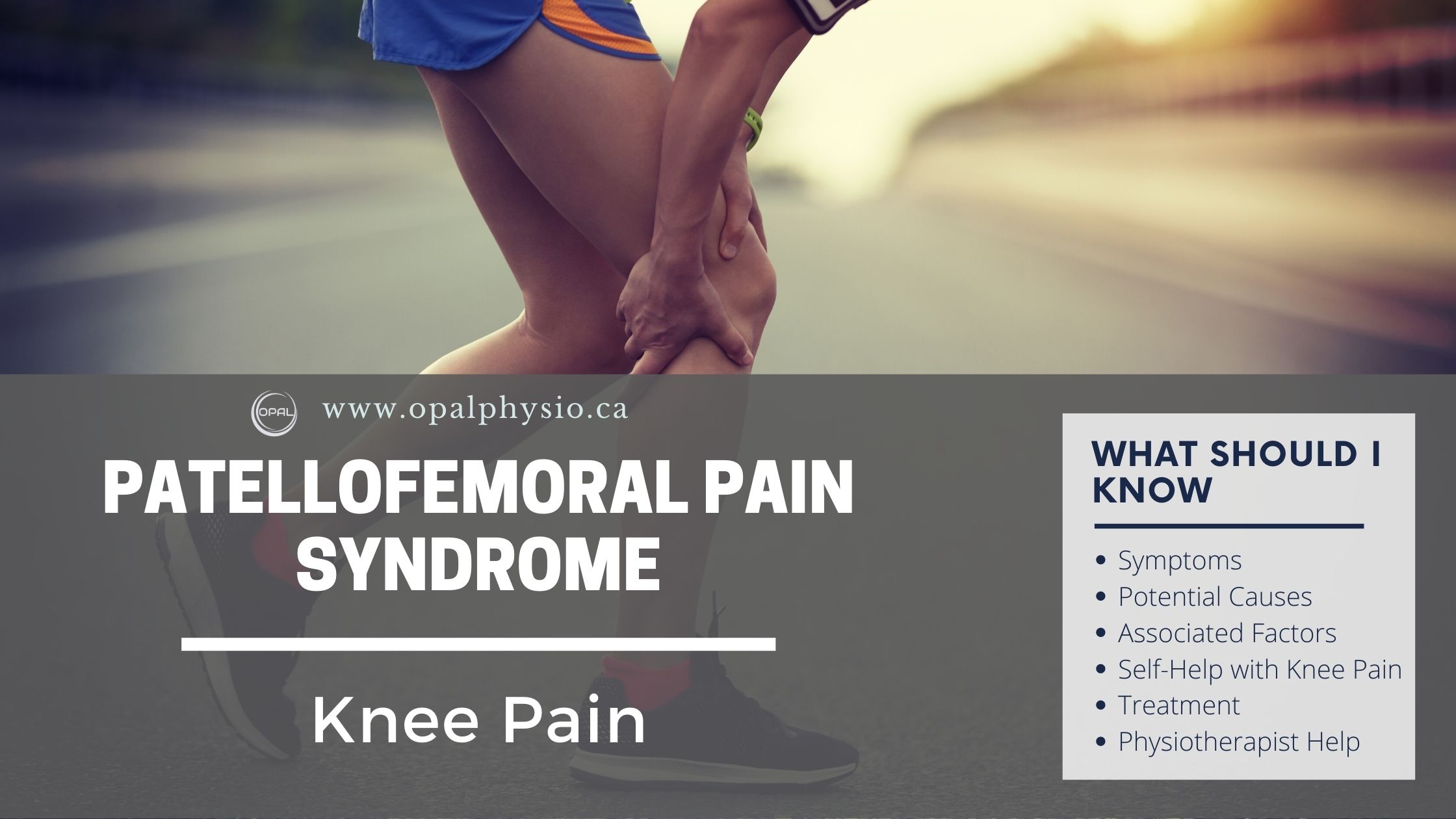7 Self Help strategies for Painful Hip and Knee Osteoarthritis
Osteoarthritis
Have you been diagnosed with Osteoarthritis of the Knee or Hip and are suffering from pain and inactivity? Do you have pain, swelling or stiffness in a joint and have an X-ray report saying you have Arthritis?
This information can help you understand your condition and gives you some self-management strategies to help your pain and inactivity. YES, Physiotherapy can help as a conservative approach and management to disease and for improving physical activity in people with symptomatic osteoarthritis.
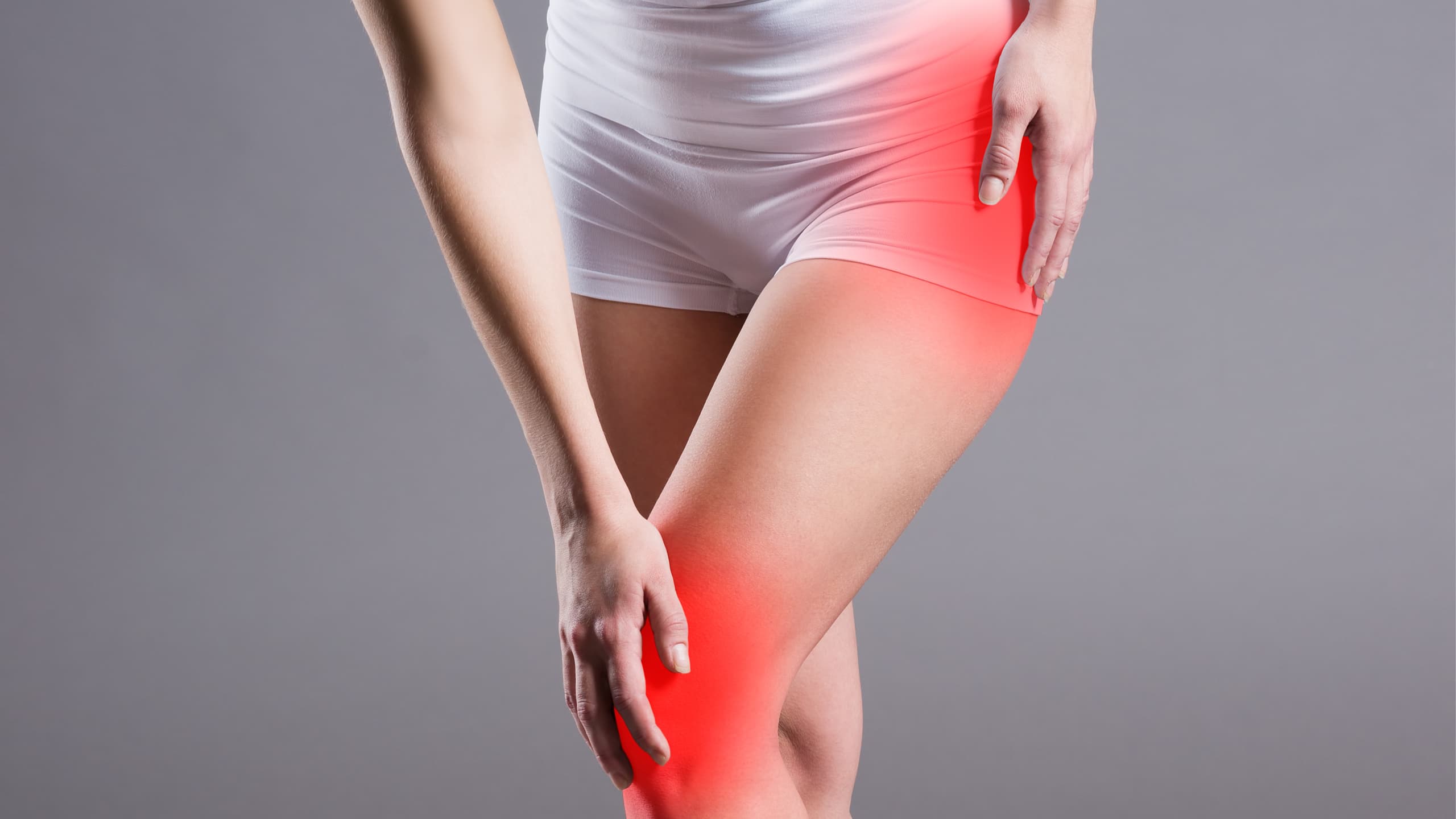
Osteoarthritis (OA), commonly known as Arthritis, is one of the most common prevalent, painful conditions or diseases and is considered a leading cause of disability. It is also a painful chronic condition or disorder among elderly individuals.
Arthritis
Osteoarthritis of the Hip and Knee is most common among Arthritis in the lower extremity. It can cause a high level of pain and disability in individuals. It is one of the leading conditions that increase the socio-economic burden on the health care system.
What is osteoarthritis?
Osteoarthritis (OA) is a progressive joint degenerative disease with decreased or destruction of joint articular cartilage, with the associated local inflammatory response.
Recent evidence shows that subchondral bone remodelling or disturbance and synovial inflammation can initiate and lead to disease progression. The subchondral bone acts as the mechanical support to the joint. It is a transition between soft and hard tissues, which is critical in absorbing the stresses during loading activities. Arthritic changes are a result of the remodelling of the subchondral bone from mechanical overload. When the abnormal loading persists over a long time, the recovery of tissues becomes irreversible, causing loss of articular cartilage and developing symptomatic Osteoarthritis. (Simon Donell 2019).
Osteoarthritis impact on life:
There is growing evidence that people with Osteoarthritis (OA) are at higher risk of falls and fractures. Osteoarthritis is considered one of the disabling musculoskeletal conditions among older people impacting mobility and their ability to work and participate in social activities with a significant impact on psychological well-being and quality of life.
Risk factors for osteoarthritis
- Physical Inactivity: Prolonged physical inactivity is associated with a reduction in the general health of people with hip and knee OA. Physical inactivity also is associated with obesity, diabetes, heart disease, declining function, and heightened pain levels, which in turn are known to increase osteoarthritis disease progression.
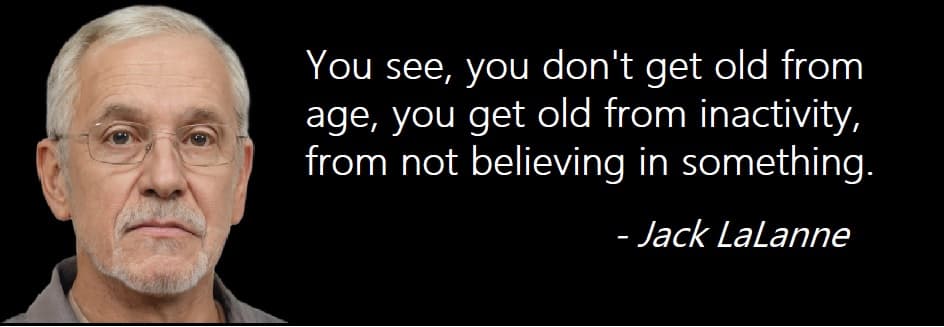
- Ageing: Osteoarthritis is known to be more prevalent in adults over 60 years of age.
- Obesity: Evidence shows that pain severity is in direct relationship with overweight and obesity among people with OA. Among obese or overweight patients suffering from OA and chronic pain, there is an associated higher calorie and fat intake in food, which is associated with pain severity in patients with chronic persistent pain (Omer et al. 2020)
- Sports-related injuries: Sports activity is associated with an increased risk of early knee OA, such as from ligamentous knee injury, high-impact sports etc.
- Repetitive increased overload or stress on joints is known to be a risk factor for OA.
Although improving physical activity can help reduce osteoarthritis symptoms, people with lower-limb OA are, however, known to be less active than people without OA symptoms. (Willet et al. 2019)
Symptoms of osteoarthritis (OA)
- severe pain and disability
- loss of function and flexibility
- Stiffness, most noticeable in the morning and with inactivity
- Tenderness
- Joint Grating sensation with movement
- Bone spurs noticeable on X-ray findings
- Joint Swelling.
**Not everyone with osteoarthritic changes on their X-ray has pain or associated symptoms. There is little correlation between the degree of Arthritis seen on X-ray and having actual pain**
There exists no known cure for OA, and with the ageing population and physical inactivity, the prevalence of OA is likely to increase as well.
*As of now there are no disease-modifying drugs or cures for Osteoarthritis*
What does evidence say for arthritis?
There is evidence to suggest that improving physical activity and muscle strengthening exercises can substantially lower pain and improve physical function in people with OA (Gohir et al. 2018)
Osteoarthritis knee treatment options:
The primary approach and first line of treatment for people with OA is usually education, exercise, and weight loss program.
Treatment of osteoarthritis includes:
Patient education: Recent studies have suggested that programs that include education on understanding the condition, the importance of adherence to exercise, self-help and coping strategies, self-efficacy and problem-solving approaches help with better managing OA symptoms.
Weight management: Pain severity has been shown to have a direct relation to overweight and obesity in patients with OA. Having an active and healthy lifestyle with a healthy nutritious diet is key to managing pain.
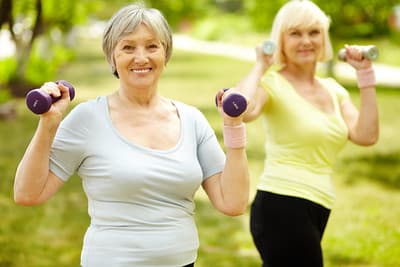
Therapeutic exercise: Exercise is an effective treatment for OA. However, the effect varies from one person to another. Physical Activity interventions are commonly provided by physiotherapists to help manage lower limb OA symptoms. Exercises are known to reduce pain and function and improve performance, and quality of life in people with Arthritis.
Orthosis: Braces – An unloading knee brace designed to correct abnormal alignment and stress on the knee joint to decrease joint pain and improve the quality of life is most widely considered a biomechanical approach for knee OA
Footwear: Footwear is a promising avenue, given the knowledge that foot position and motion influence load distribution to knee and hip joints. Getting the right advice and guidance regarding appropriate footwear is considered to help manage the symptoms of joint arthritis.
Surgery: Arthroscopic Surgery and Joint Replacement Surgery are usually performed to treat joint arthritis. Usually, surgeries for OA are considered when the first line of conservative approaches no longer gives satisfactory symptom relief or results and this approach helps to reduce the progression of the disease.
* Nonsurgical treatment approach remains the first-line management and plays a vital role in treating Osteoarthritis of hip and knee *
Physiotherapy treatment for osteoarthritis:
Exercise intervention recommendations are the first line of management and non-pharmacological based treatment approach to help people with Osteoarthritis to manage their symptoms. Exercise is a planned and structured program aimed to help improve pain and to maintain physical fitness.

Physiotherapists are the primary health care professionals who provide exercise-based interventions to people with lower-limb symptomatic OA. Exercise therapy is known to improve pain and increase function in patients with OA.
Orthopedic Physiotherapy based treatment approaches can range from strengthening exercises, manual therapy approaches, and balance enhancement training. The treatment plan will also include client-based education on understanding OA, addressing behavioural or lifestyle factors, provide with self-help strategies to manage OA symptoms.
Barriers to maintaining continuity of exercise regimen:
I do not have time for exercising!!
Although the exercises are known to be helpful, exercise adherence barriers remained in the longer term with patients with OA. Factors around limited long-term effectiveness to prescribed intervention may be due to progression of OA disease severity or a gradual reduction in adherence to health professional recommendations and difficulty to maintain changes in their exercise regimen.
To experience exercise-related benefits, you need to maintain the activity level for a sustained period. Patients with OA are less active than non-symptomatic adults and require more support to maintain their physical health, which could likely impact their exercise adherence
Maintaining prescribed exercise levels requires more considerable effort from the patients, and is achieved by having a priority and goal setting.
7 Self-help strategies for osteoarthritis:
Every self-management plan needs to be unique and catered to your needs, to help you continue through the journey. Choose the treatment plan that makes sense for you and your requirement.
Start your Self-management with
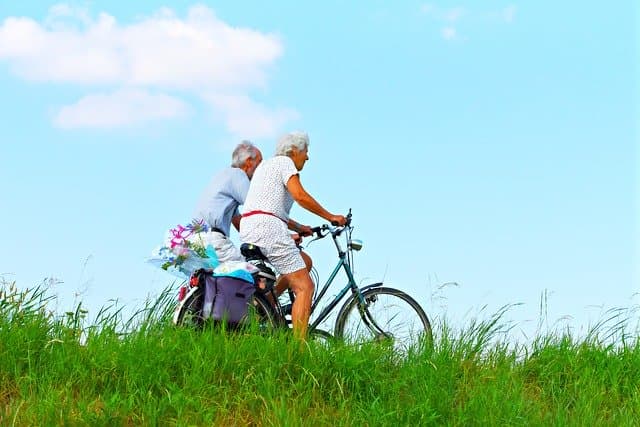
- Establishing an action plan/goal: Evidence suggests that goals that are decided by the person lead to higher engagement and achievement/adherence. Have short- and long-term goals that are achievable. This approach will help you identify goals and priorities, establish an action plan and monitor your progress.
- Pain management: Alternative to taking pain medications, do try practicing mindfulness meditation, cognitive behavioural therapy, Tai-chi, Qi-gong, yoga practice etc.
- Exercises: Start with gradual progressive exercises to improve overall flexibility, strength, and cardiovascular function. Make sure to consult with a healthcare professional before starting any new exercises. Exercises that do not put much stress on your joints, like walking, cycling, and swimming can help as an exercise routine. To avoid injury while playing any sport, always perform warm-up with stretching exercises. Learn to modify activities that put an impact on your joint to prevent injuries leading to Arthritis
- Social connections and social activity: Increasing your social connections and activities is proven to improve one’s well-being. Try finding local or online exercise and weight-management programs to help you start. Try taking a walk with your friend.
- Keep mobile: Assistive devices like cane / walking poles help in maintaining your mobility, and day-to-day activities can be of significant help.
- Footwear: Footwear is an integral part of self-management; given that foot position and motion influence load distribution, it is essential to find appropriate footwear for use.
- Diet: Good healthy nutrition is an essential part of musculoskeletal health. It has a supportive effect on bone, as well as on cartilage structure and immune modulation in patients with arthritis and pain. Appropriate weight management strategies will help protect your joints and improve your health outcomes.

In conclusion, instead of trying to treat the osteoarthritis condition with pain medications, you can try and help manage the symptoms using the above self-help strategies or consult your physiotherapist for a customized treatment plan as the first line of approach.

Cynthia Pathipati – Registered Physiotherapist
Cynthia Pathipati completed her bachelor’s in physiotherapy and is a qualified Registered Physiotherapist in good standing with the College of Physiotherapists of BC with more than 15 yrs of experience. She has Post-Graduate Credentials and Certifications as well as extensive knowledge experience in treating pelvic floor, orthopedic, neurological, vestibular and pain conditions.

